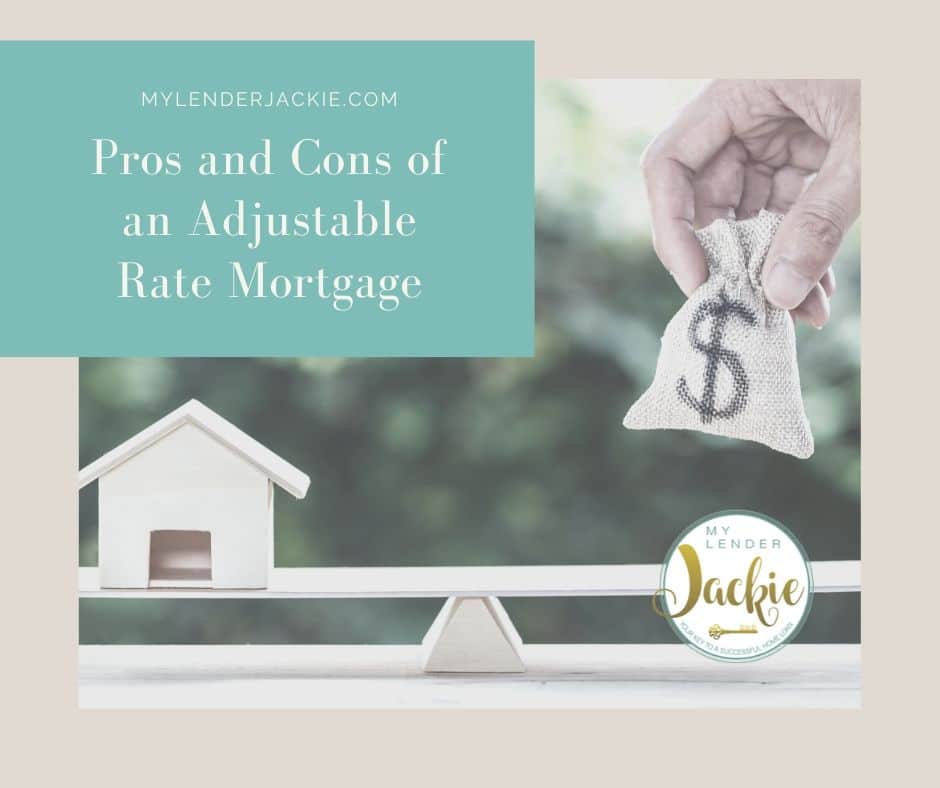An adjustable-rate mortgage, also referred to as an ARM, is a home loan with a fixed rate for the first few years that switches over to an adjustable rate. The beginning fixed-rate period can be anywhere from the first three to ten years of the loan. This differs from traditional fixed-rate loans that hold the same interest rate over the entire life of the loan.
So what are the details of an ARM? Are they a good option? Let’s look at the Pros and Cons of an adjustable-rate mortgage.
How an ARM Works
After the initial fixed-rate period is over, your payments can increase or decrease depending upon current market interest rate changes. The actual rate your particular loan will change is based on the individual loan terms and the benchmark interest rate index chosen by the lender that holds your loan.
Pros of an ARM
Low Payments to Start Out
In the beginning of the loan, during the fixed-rate phase, you typically can get a lower interest rate and monthly payment than a fixed-rate mortgage. Common ARM terms are 3/1, 5/1, 7/1, and 10/1. The first number is the number of years the initial fixed rate is guaranteed for. So with a 5/1 ARM, you would have five years of stable low payments.
Flexibility
An ARM may be a good option for you if you do not plan to live in the house for a long period of time. If you plan to move within the time of the fixed-rate period, you can take advantage of the ARM’s lower interest and then sell before the adjustable-rate period begins.
Rate and Payment Caps
An ARM can have several types of caps. These caps limit the increases on your mortgage rate and the size of your monthly payment. This includes caps on how much the rate can change during the adjustable period and the total rate change over the entire life of the loan.
Payments Could Decrease
If interest rates fall and drive down the index of which the ARM is benchmarked when the loan switches over to an adjustable rate, your payment could drop.
Cons of an ARM
Payments Could Increase
If interest rates are rising payments can increase during the adjustable rate term. Some buyers may have trouble making the new higher payment.
Unplanned Changes
An ARM requires planning for when the adjustable period of the loan begins. No matter how carefully you plan there is no way to 100% guarantee what will happen. Some homeowners find themselves unable to sell or refinance when they want to before the rate changes. If the rate goes up and you can’t make your home payment, you could lose your home.
Pre-payment Penalty
Some ARMs include a pre-payment penalty. This is an added fee that is charged if you sell your home or re-finance and pay off the ARM entirely before the loan is up. If you are considering an ARM because you are planning to move into a home for a short amount of time, make sure to choose an ARM without this penalty.
ARMs are Complex
ARMs can come with a set of complicated rules as well as fees and structures. It is very important for borrowers to fully understand what they are legally signing their name to. Ask plenty of questions about any ARM you consider, and if it is becoming overwhelming or confusing don’t take the loan.
For more information on mortgages in California and applying for the best mortgage for you, please contact me anytime.
More:
How Does a Mortgage Loan Officer Get Paid?


